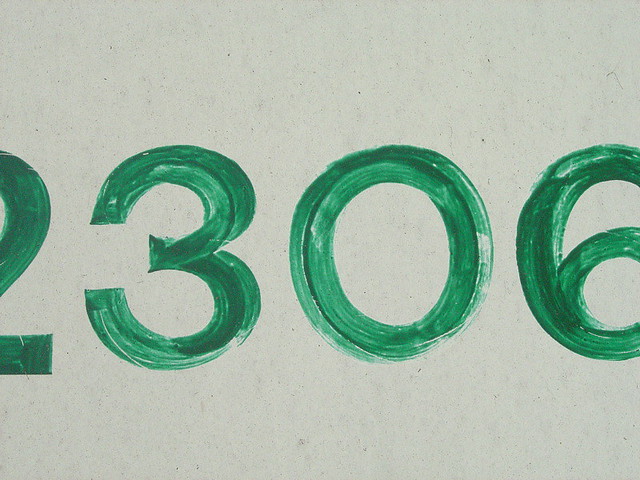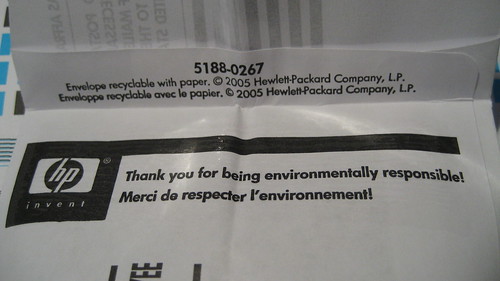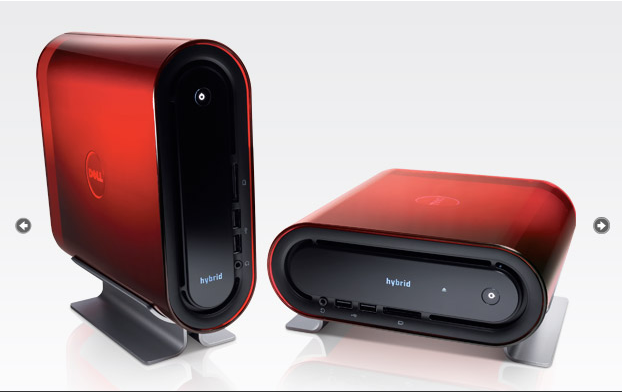As I was in Pennsylvania to attend SAP’s Analyst’s Base Camp event earlier this year, I took the opportunity to get a tour of the new LEED Platinum certified Headquarters building. I was shown around the building by the facilities manager, Jim Dodd, who informed me of the different steps taken to enable the structure to achieve its an impressive LEED Platinum certification from the U.S. Green Building Council (USGBC).
I videoed the tour and see below for a transcription of it:
Tom Raftery: Hey everyone! Welcome to GreenMonk TV, I am here in Newtown Square at SAP Headquarters. I am with —
Jim Dodd: Jim Dodd.
Tom Raftery: Jim, you are —
Jim Dodd: The Facilities Manager for the campus.
Tom Raftery: Okay, now we are standing on a — we are in the new building in Newtown Square.
Jim Dodd: The new LEED Platinum Headquarters’ building, right.
Tom Raftery: Okay, and can you tell me about the floor that we are standing on?
Jim Dodd: In comparison to the floor in the headquarters’ old building, where we used marble that was imported from Italy, what we wanted to do was to reduce that cost and do a sustainable floor. And so this floor is a concrete floor, and it has a mixture of seashells and glass in it on a terrazzo finish and then we polished it and honed it up, so it would be nice and shiny. But it’s considerably less expensive obviously than the marble floor in the main building and we use it in the atrium area in a radiant floor which we’ll talk about in a minute.
But it’s a less expensive solution and yet it’s a very attractive solution in terms of the flooring for both the link to the new building and the atrium that runs the full length of the floor downstairs on the promenade.
Tom Raftery: So, Jim, tell me about the floor.
Jim Dodd: Okay. In the promenade area, below us here, is a radiant floor, we have pipes that run through that floor and we have ten geothermal wells that are drilled in the back of our property. We take the water out of the ground where it comes as a constant temperature and we pump it through the piping on the concrete floor downstairs and the floor radiates heat or air-conditioning depending on what time of the year it is. And it helps to keep this big atrium very comfortable without having to use large amounts of air-conditioning or heating.
Tom Raftery: So it’s just using natural heat or cooling from the earth.
Jim Dodd: That’s correct, yes. So the water really comes out about 55 degrees out of the ground and we can pump that through the floor and that cools the concrete and radiates coolness in the summer time, and then in the winter time what we got to do is heat that water up to about 72 degrees and then we pump that through the floor and it heats the concrete and it radiates heat off the floor, and because it’s on the floor, it affects the employees immediately and it keeps the atrium very, very, very comfortable.
Tom Raftery: Okay, and you’ve got these nice banisters.
Jim Dodd: Yes, it’s an interesting situation here. When the original site survey was done for this building, it would have wiped out of a grove of the mature Chinese chestnut trees that are absolutely beautiful and are part of the aesthetics of the campus. So we moved the building in order to save half of those chestnut trees, but the chestnut trees that we did have to harvest in order to put the building here, we had them milled into handrails for the whole building.
About 90% of what’s in this building to construct it was sourced locally within 500 miles of the building and that’s a sustainability feature again, it provides points on the LEED scale because it cuts down on your carbon output because you are not exporting things from thousands and thousands of miles away.
Tom Raftery: So Jim, tell me about the under floor?
Jim Dodd: Yeah, the difference — the primary difference between the original building and the new building is in the original building the air distribution comes down from the ceiling plenum, and of course, that’s not very efficient because heat rises, so if you are trying to get heat down to where the people sit, it’s not in a very efficient approach. In this building, we use an under floor distribution where the air comes up through the floor and it’s controlled in each location with a vent, so people can control the amount of air coming in their space and by coming up from the floor, the treated air gets to the employee immediately and there is an immediate reaction to that temperature adjustment.
In the other building of course the hot air comes down but it turns around and goes right back up, so it’s not as efficient as this underfloor system is in this building here. We have a wood feature in each of our hallways that separate the neighborhoods and it’s made from bamboo. Again a sustainable wood that’s renewable every seven years in comparison to oak or walnut or some other wood that takes 40 or 50 years to mature. We decided to use bamboo in this building because it’s sustainable.
Tom Raftery: So, tell me about the carpets.
Jim Dodd: So the carpet, in most instances when you install large amounts of carpet, there is volatile organic chemicals in the carpet like formaldehyde that require you to aerate the building for a period of time before you can occupy it. We work with the manufacturer of this particular carpet to reduce or eliminate VOCs in it. So we did not have to ventilate the building for a period of time prior to occupancy.
And it makes for a cleaner environment for the employees overall without the organic chemicals off gassing from the carpet.Tom Raftery: So what have we got beside us, Jim?
Jim Dodd: This is a filter water system that we put in. A number of years ago we used to provide bottled water for the employees and then we realized how much plastic waste was being generated, and even though it was being recycled. We decided to eliminate bottled water from the campus and we installed one of these Innowave water systems in each of our pantries. It’s filtered and it also cools the water and heats the water. So if you want to make tea, you can get hot water, and if you want cold water, you can get cold water.
But it reduced our cost by over $120,000 on bottled water, and got rid of the plastic issue.
Tom Raftery: So, Jim, where are we now?
Jim Dodd: We are in the chiller room of the new building of the Platinum LEED building and what we do that’s unique in this building in comparison to other buildings is we actually make ice at night and store it in these very big tanks behind me, and we use the system because at night the electricity is less expensive and the pressure on the grid is lower. So we don’t have to run the chiller during the day, because what we do is, we melt the ice during the day when we need air-conditioning and then we use that to cool the building and we don’t have to use our chiller during the day, when the grid is being stressed by everyone else, wanting air conditioning.
Tom Raftery: So Jim, tell me about this garden, where are we?
Jim Dodd: We are on the roof of the new building, believe it or not, and this is a green roof, this is a very unique approach to maintaining constant temperatures in the building. By having a green roof we keep the building cooler in the summer and warmer in the winter.
The other unique thing about this, as you can see we have to mow grass and we didn’t want to have to store gasoline up here, because it’s a hazardous flammable material. So we sought out a company that made a very good electric lawnmower and we mow the grass up here with electric lawnmower. In that way, we don’t have to store any gasoline up here, and it’s quite and it doesn’t just dirt people when they are working, it’s just a very unique approach to roof construction.Tom Raftery: Jim, what have we behind this?
Jim Dodd: Behind this is the meadow as a part of our 102 acres of property here, and what we did this year, was working with the Triskeles Foundation and One Village, One Farm, these are non-profit organizations; we agree to put in an organic garden. We have enough room. So we put in a 100×50 organic garden with 22 raised beds and we’ll donate the food at the end of this year to all the local food banks.
We expect to produce hundreds of pounds of produce in this garden, and working with organic, no pesticides or anything like that, all natural ingredients to keep the bugs off, and then there is a 6 foot deer fence around it, because we have a lot of deer on the property and the garden would just get eaten to nothing. So we put a fence around it to protect it from the deer.
So we’re doing cucumbers, summer squash, tomatoes and peppers, and then, we’ll have a fall planting as well, and all of that food will go to the local food banks.
We have 80 volunteers that have volunteered to take care of the garden. So we have plenty of people to take care of it, and it’s going to work out really, really well, and it’s another sustainable aspect of the property.
We also have two beehives on the property as well. We have a beekeeper that works for SAP and he had asked us if he could put beehives on the property. And we agreed to do that, because we felt that that was another sustainable issue in terms of pollinating and protecting the bees.
There has been a degeneration of bee colonies around the world and so having good bee colonies is very important to the propagation of all the different plant life that we have on the campus. So we decided to put the beehives here as well.
Tom Raftery: So what have we behind us, Sir Jim?
Jim Dodd: Okay, what you see behind us here is a 60,000 gallon cistern, buried in the ground, and we collect our rainwater in that cistern and then we use the rainwater for irrigation and flushing toilets, you know what, they call brown water or gray water, and with all the rain that we’ve had it’s full.
But it’s another way for us to get LEED points, but it’s also a better way to manage our water consumption on campus because we can use that rainwater to irrigate. We have a beautiful courtyard in between the two buildings and we irrigate that with that water. We also irrigate the green roof that you’ve seen with the cistern water. So it all goes into that 2 million gallons of savings of water per year.
Tom Raftery: So why are we standing beside this artwork, Jim?
Jim Dodd: This is part of our social sustainability program where we work with local non-profits to do certain things. In this particular case, we work with a non-profit called Fresh Artists. These are young children, these are not adults, these are children who have painted this artwork that you see behind you.
We make a donation, substantial donation to fresh artists, so they can buy supplies and easels and paints and brushes for their children, and then we in turn purchase their artwork to hang in this building.
So except on the executive floor, all other floors of this building have examples of this artwork from these young children and some of them are quite attractive and fun. But it’s a social sustainability thing as a part of our work with the community.
And the IT systems?
Jim Dodd: It’s a dashboard.
Tom Raftery: Right.
Jim Dodd: And it tells you the consumption of electricity in this building, the consumption of electricity in the other building, and it tells me what my PUE is in my data center, which is a –
Tom Raftery: I know PUE.
Jim Dodd: Okay, you know what that is. So it tells me how we’re operating, whether there’s some kind of anomaly, we’re using more electricity than usual. We can get just a quick glimpse of how the building is functioning, and what its consumption rates are in both buildings.
But then they go far beyond that and they can drill down to an individual air handler, right to the motor and determine if it’s running, how fast it’s going, how much power it’s using. We monitor over 10,000 points of information of data on all the systems in the building.
Full disclosure – SAP paid my travel and expenses to attend the SAP Analysts Base Camp





